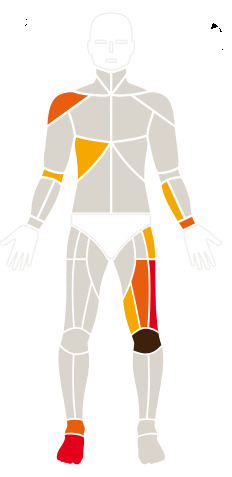Medical Thermography
Skin Cancer & Skin Health
A Proactive approach .

Join the Health Optimization Revolution
Skin cancer, a widespread and potentially life-threatening condition, poses a significant threat to individuals of all ages, particularly in sunny regions. With relentless sun exposure, residents are increasingly vigilant about protecting their skin and seeking innovative approaches to prevent skin cancer. This article explores the role of thermography in early detection and monitoring of skin cancer risks, offering empathy and support to those affected while highlighting the benefits of incorporating thermography into routine skin health assessments.
Understanding Skin Cancer
Skin cancer encompasses a range of malignancies arising from abnormal growth of skin cells, most commonly triggered by exposure to ultraviolet (UV) radiation from sunlight or artificial sources. The three primary types of skin cancer include basal cell carcinoma (BCC), squamous cell carcinoma (SCC), and melanoma, each with distinct characteristics and treatment approaches.
A Non-Invasive Approach to Skin Cancer Risk Detection
Thermography, a non-invasive imaging technique that detects infrared radiation emitted from the body’s surface, offers a promising adjunctive tool in the early detection and monitoring of skin cancer. By visualizing thermal patterns associated with altered blood flow, inflammation, and cellular metabolism, thermography can identify suspicious lesions and guide further diagnostic evaluation, potentially facilitating earlier intervention and improved treatment outcomes.
How Thermography Works in Skin Cancer Risk Detection
Thermography operates on the principle that cancerous lesions exhibit distinct thermal signatures compared to surrounding healthy tissue. Malignant tumors typically display increased metabolic activity and angiogenesis, resulting in elevated surface temperatures detected by thermographic imaging. By capturing thermal asymmetries and abnormal heat patterns, thermography can highlight areas of concern for further evaluation, prompting clinicians to perform targeted biopsies or additional imaging studies to confirm or rule out malignancy.
Benefits of Thermography in Skin Cancer Risk Detection
Thermography offers several unique benefits:
Empowering Individuals to Take Control of Their Skin Health
In regions where the sun’s rays are ever-present and skin cancer risk is heightened, thermography emerges as a powerful tool in the fight against this formidable disease. By offering a non-invasive, radiation-free means of detecting early-stage lesions and monitoring disease progression, thermography empowers individuals to take proactive steps towards protecting their skin and preserving their health.
Skin cancer remains a significant public health concern, particularly in sun-drenched regions. With its ability to detect thermal signatures indicative of early-stage lesions and monitor disease progression over time, thermography offers a valuable adjunctive tool in the early detection and monitoring of skin cancer. By incorporating thermography into routine skin health assessments, individuals can take proactive steps towards protecting their skin and minimizing their risk of developing this potentially life-threatening disease.
